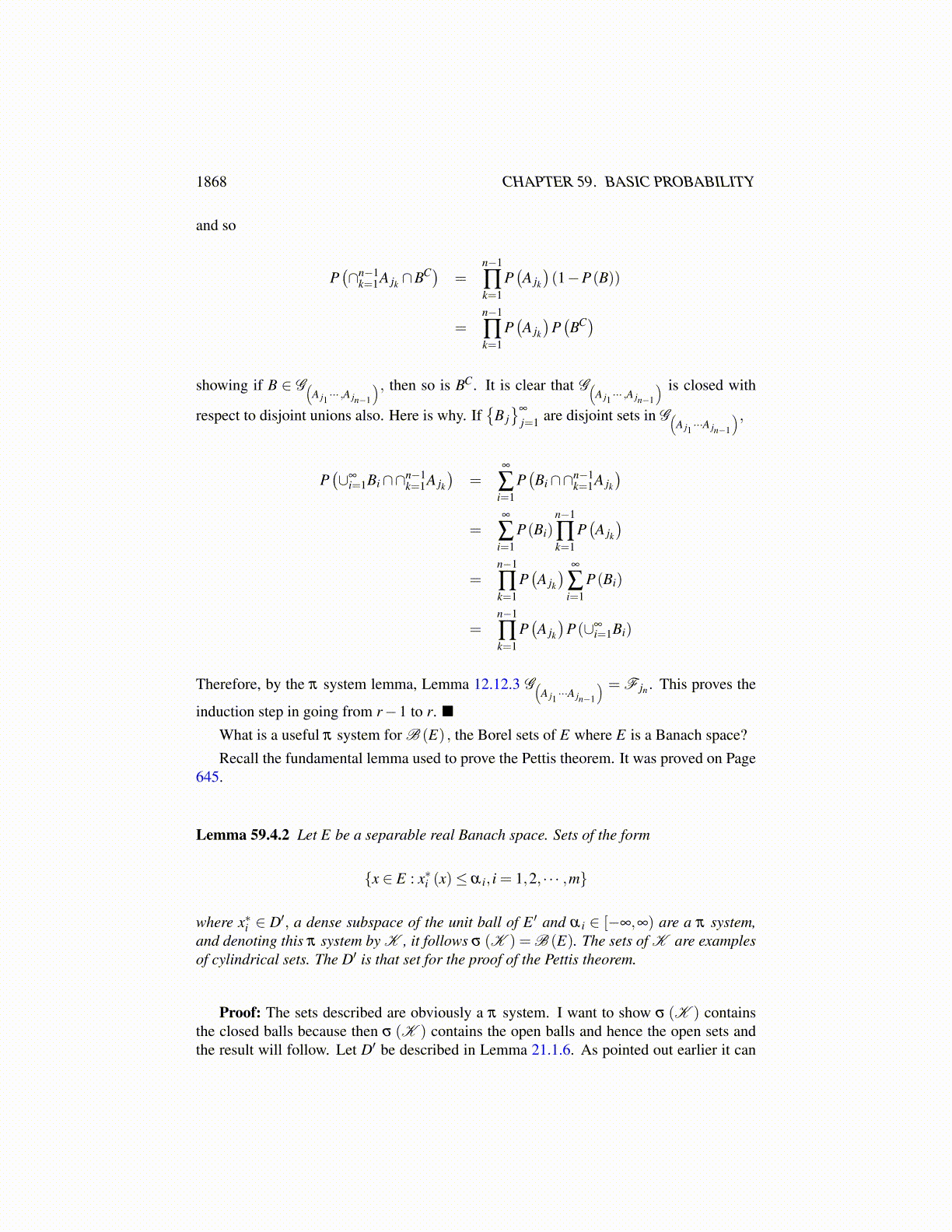
1868 CHAPTER 59. BASIC PROBABILITY
Then by the first part
E
(r
∏i=1
Xni
)=
r
∏i=1
E (Xni )
Now |∏ri=1 Xn
i | ≤ |∏ri=1 Xi| ∈ L1 and so by the dominated convergence theorem, you can
pass to the limit in both sides to get the desired result.Maybe this would be a good place to put a really interesting result known as the Doob
Dynkin lemma. This amazing result is illustrated with the following diagram in whichX =(X1, · · · ,Xm). By Proposition 59.1.6 σ (X) = σ (X1, · · · ,Xn) .
(Ω,σ (X))X→ F
X↘
g↗
(∏mi=1 Ei,B (∏m
i=1 Ei))
You start with X and can write it as the composition g◦X provided X is σ (X) measurable.
Lemma 59.3.6 Let (Ω,F ) be a measure space and let Xi : Ω→ Ei where Ei is a separableBanach space. Suppose also that X : Ω→ F where F is a separable Banach space. ThenX is σ (X1, · · · ,Xm) measurable if and only if there exists a Borel measurable functiong : ∏
mi=1 Ei→ F such that X = g(X1, · · · ,Xm).
Proof: First suppose X (ω) = f XW (ω) where f ∈ F and W ∈ σ (X1, · · · ,Xm) . Thenby Proposition 59.1.6, W is of the form (X1, · · · ,Xm)
−1 (B)≡ X−1 (B) where B is Borel in∏
mi=1 Ei. Therefore,
X (ω) = f XX−1(B) (ω) = f XB (X(ω)) .
Now suppose X is measurable with respect to σ (X1, · · · ,Xm) . Then there exist simple func-tions
Xn (ω) =mn
∑k=1
fkXBk (X(ω))≡ gn (X(ω))
where the Bk are Borel sets in ∏mi=1 Ei, such that Xn (ω)→ X (ω) , each gn being Borel.
Thus gn converges on X(Ω) . Furthermore, the set on which gn does converge is a Borel setequal to
∩∞n=1∪∞
m=1∩p,q≥m
[∣∣∣∣gp−gq∣∣∣∣< 1
n
]which contains X(Ω) . Therefore, modifying gn by multiplying it by the indicator functionof this Borel set containing X(Ω), we can conclude that gn converges to a Borel function gand, passing to a limit in the above,
X (ω) = g(X(ω))
Conversely, suppose X (ω) = g(X(ω)) . Why is X σ (X) measurable?
X−1 (open) = X−1 (g−1 (open))= X−1 (Borel) ∈ σ (X)